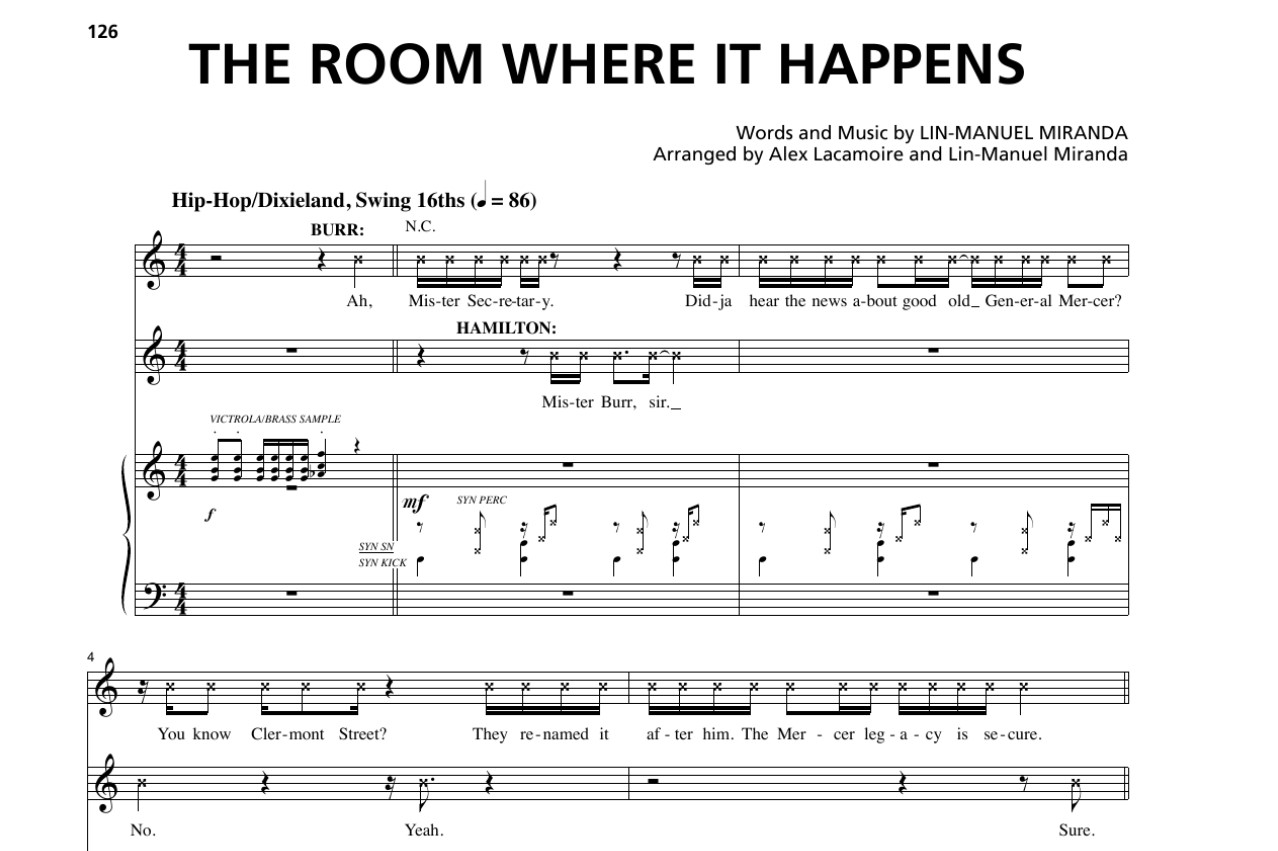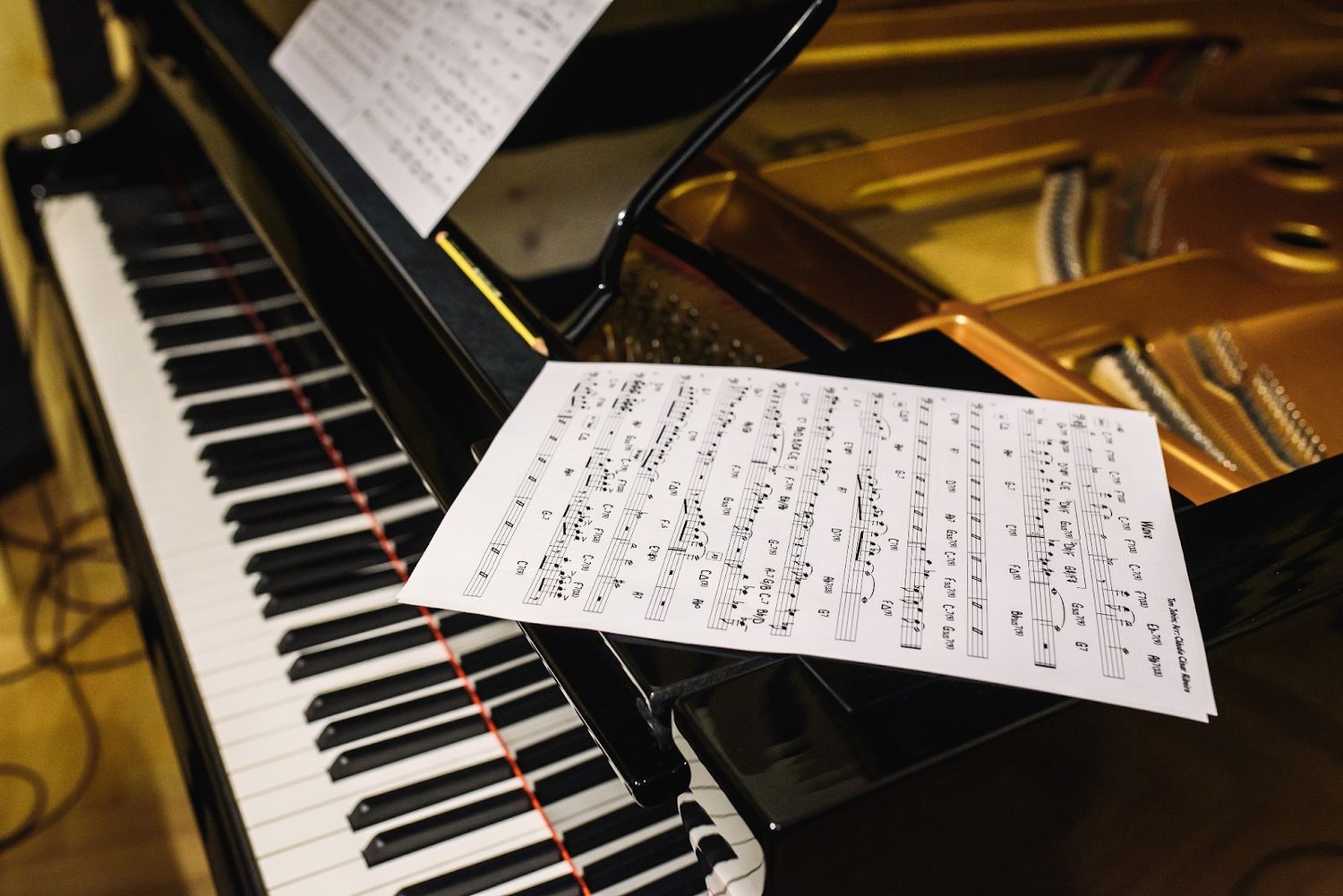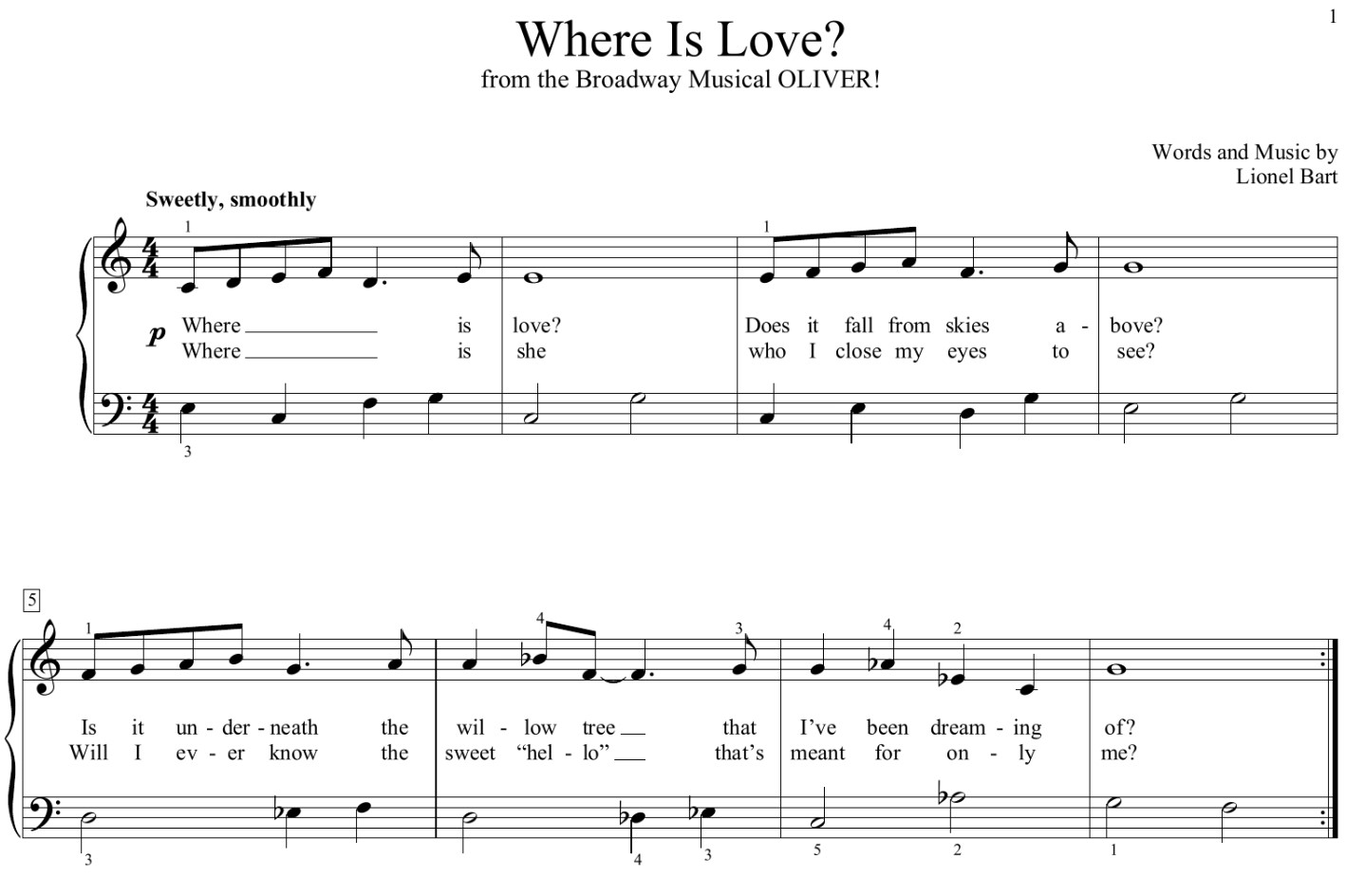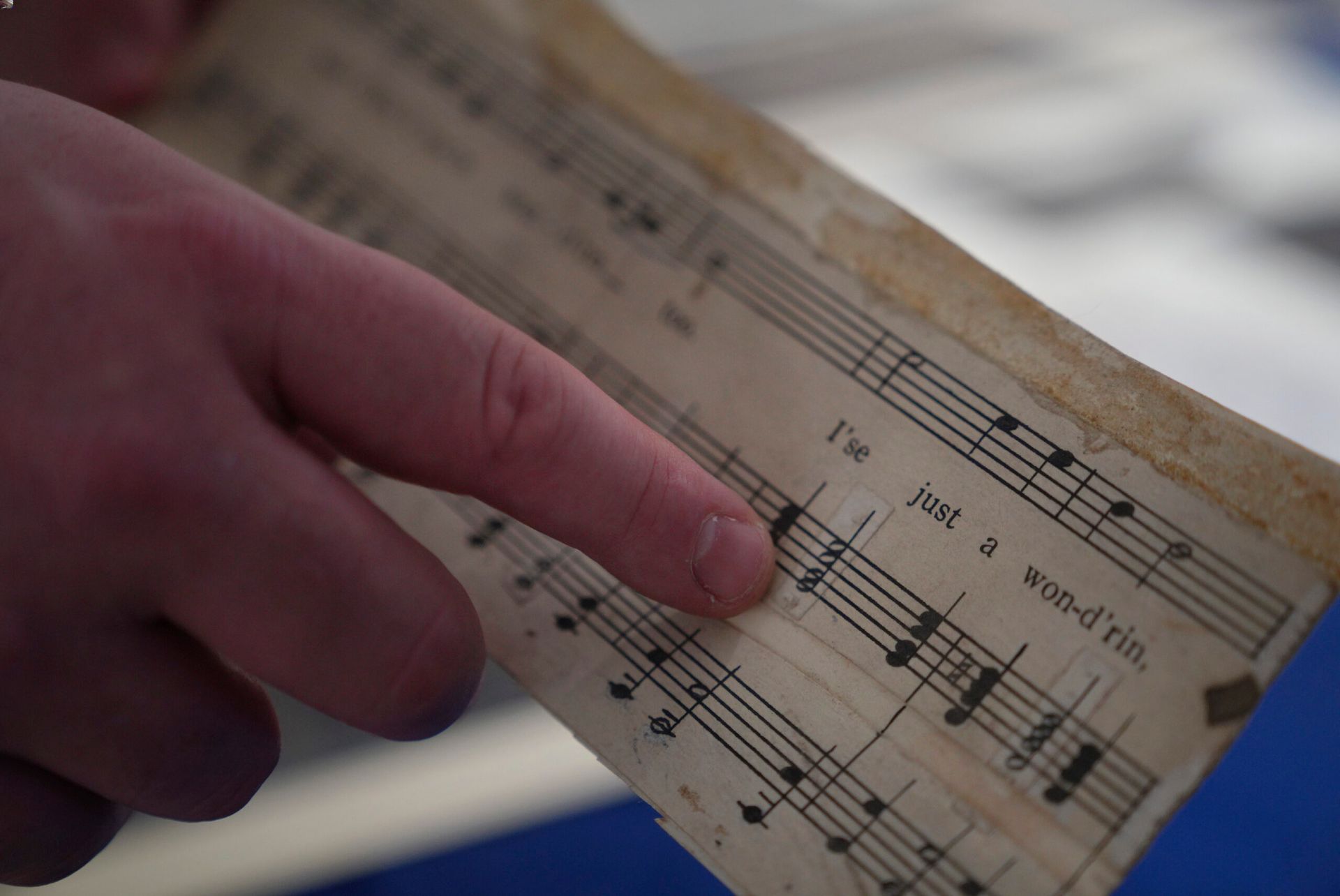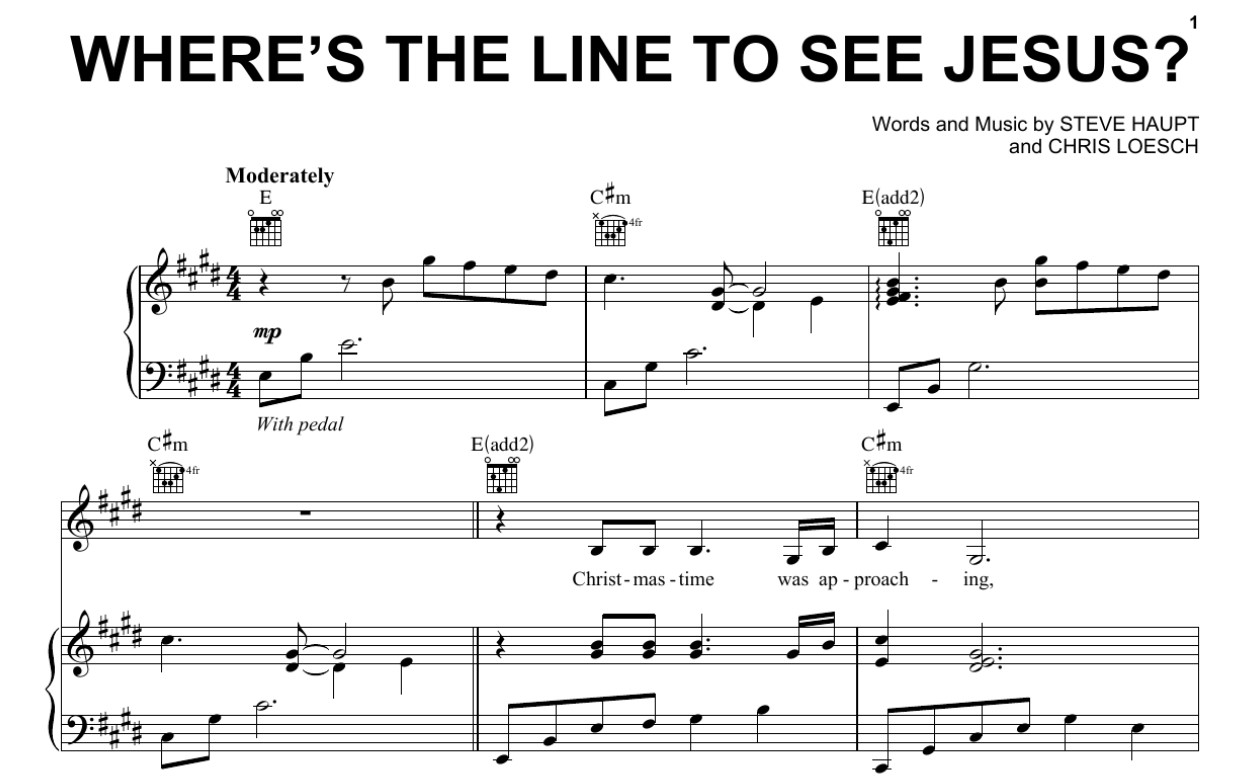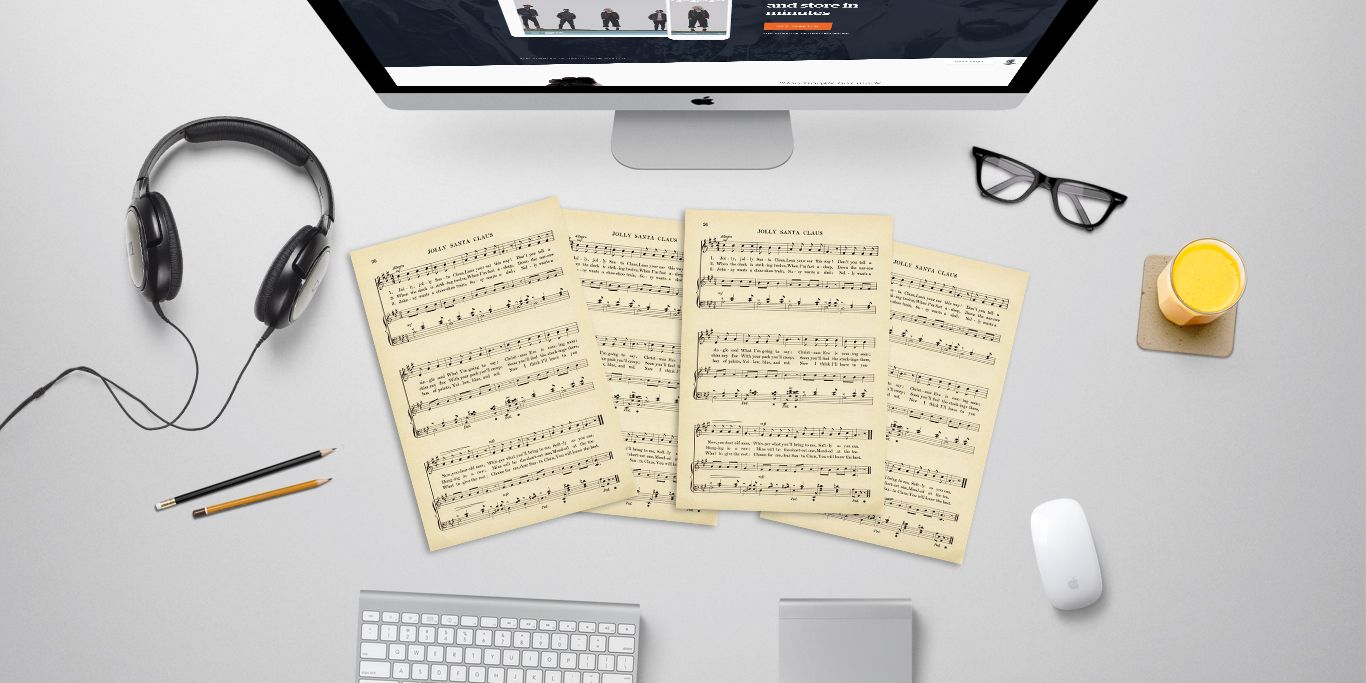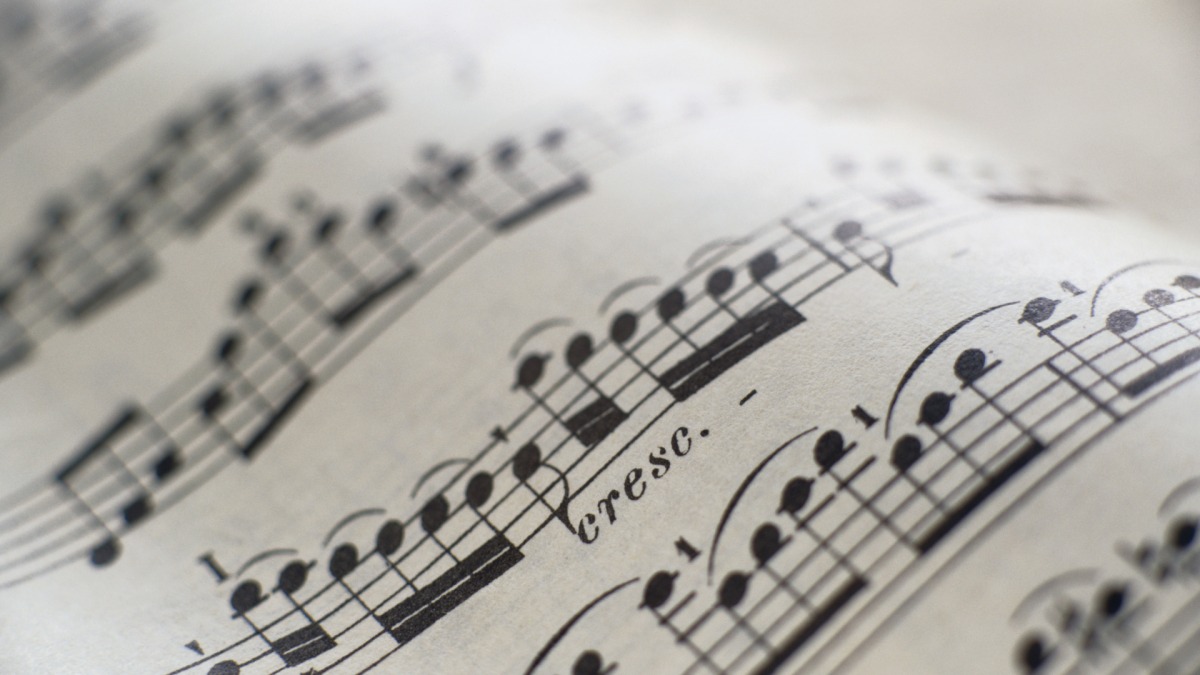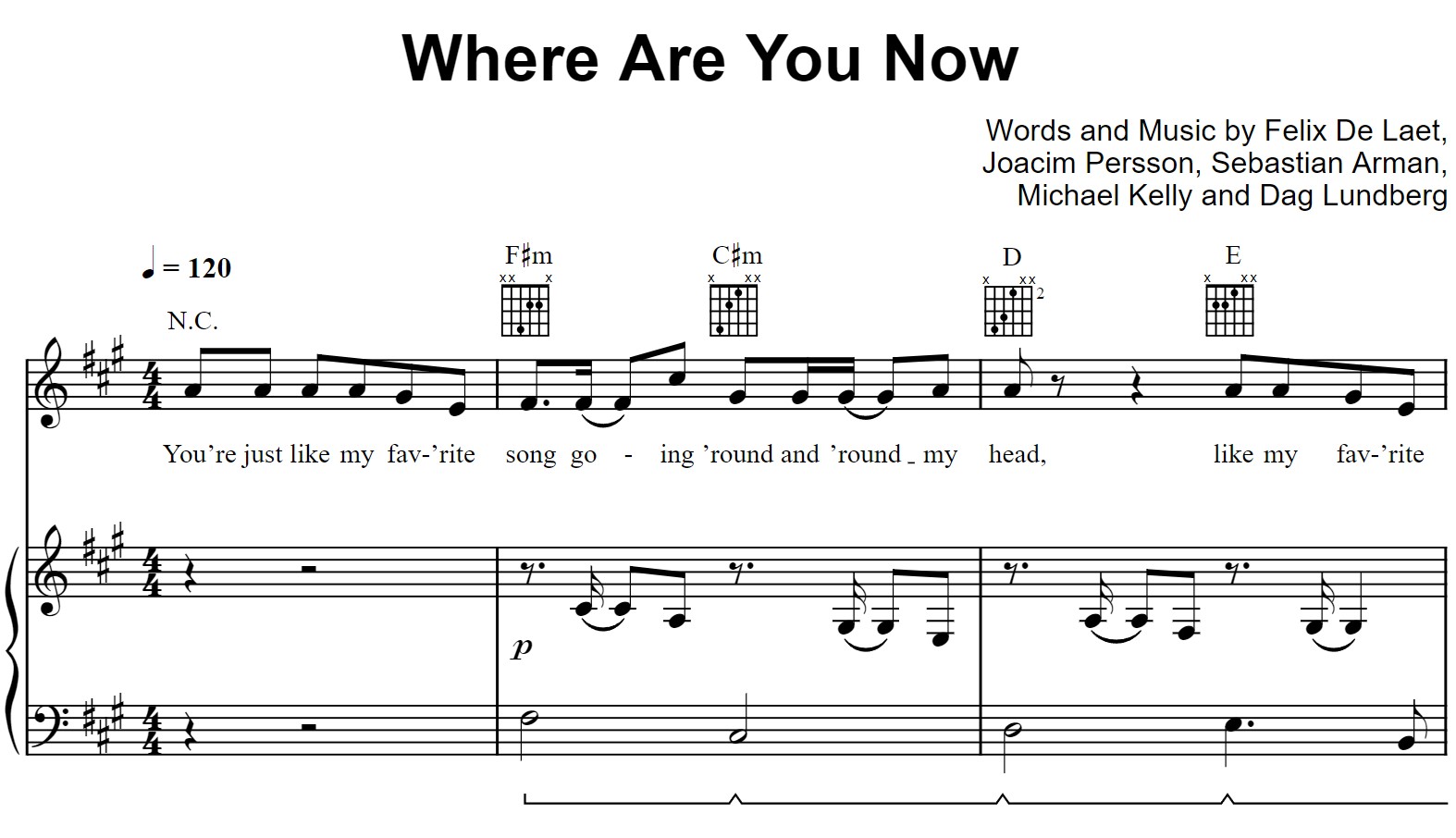Home>Production & Technology>Tempo>Where Is Tempo On Sheet Music
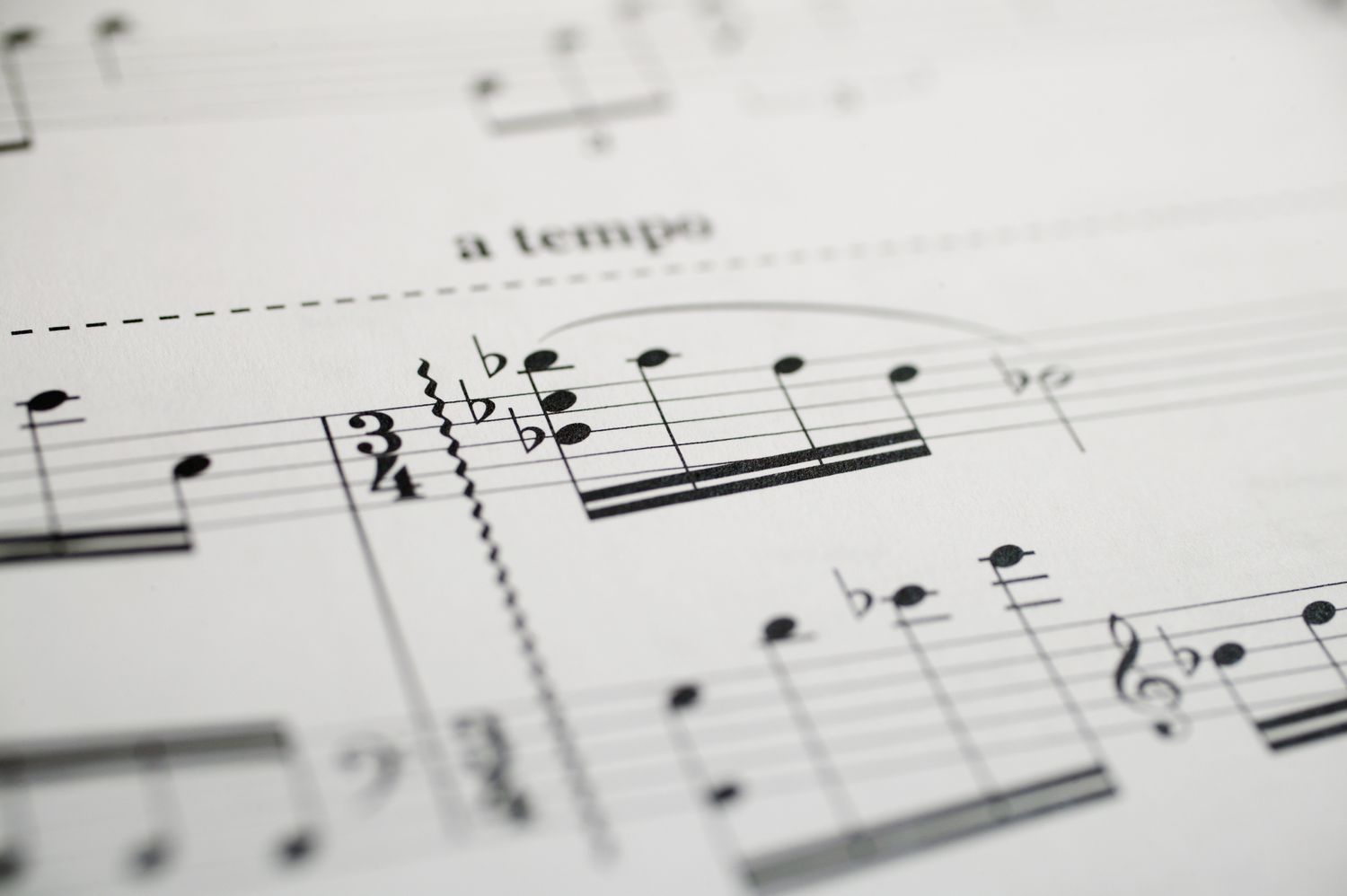

Tempo
Where Is Tempo On Sheet Music
Published: December 10, 2023
Discover how to locate tempo markings on sheet music and understand their significance. Explore different tempo indications and improve your musical interpretation.
(Many of the links in this article redirect to a specific reviewed product. Your purchase of these products through affiliate links helps to generate commission for AudioLover.com, at no extra cost. Learn more)
Table of Contents
Introduction
In the world of music, tempo is an essential element that dictates the speed and rhythm of a piece. It determines the pace at which a composition is performed, setting the mood and intensity of the music. Tempo plays a crucial role in conveying the emotions and intentions of the composer to the performer and the audience.
Tempo, derived from the Italian word for “time,” refers to the speed at which a musical piece is played. It can be described as fast, slow, or somewhere in between. Tempo notations provide a precise indication of the desired speed, ensuring that musicians can accurately interpret and perform a composition.
But where does tempo reside on sheet music? How is it notated and communicated? These questions are often asked by aspiring musicians and music enthusiasts, and in this article, we will delve into the details of how tempo is represented on sheet music.
Sheet music serves as a written record of a musical composition. It contains various musical symbols, notations, and instructions that guide performers in playing the piece. Tempo is one of the crucial components represented on sheet music, enabling musicians to understand the desired speed of the composition.
Throughout the centuries, composers and musicians have developed standardized notations to convey tempo accurately. These notations have evolved over time, enabling performers to understand and interpret the tempo intentions of the composer.
Now that we have a basic understanding of what tempo is and its significance in music, let us explore how it is notated on sheet music and the common tempo markings used in musical compositions.
Definition of Tempo
Tempo refers to the speed or pace at which a musical composition is performed. It determines the duration of each note, creating a rhythmic framework for the piece. Tempo is a fundamental element in music that guides the timing and overall feel of a composition.
Tempo is typically indicated at the beginning of a musical score and is represented by a specific marking or term. This marking provides the musician with a guideline of how fast or slow the piece should be played. Composers carefully select the tempo to convey the desired mood, energy, and character of the music.
There are various tempo terminologies used to indicate specific speeds. These terms can be in different languages, but Italian is the most commonly used in Western classical music. Some well-known Italian tempo markings include:
- Grave: Very slow and solemn
- Largo: Slow and broad
- Adagio: Slow and leisurely
- Andante: Moderately slow and flowing
- Allegro: Fast and lively
- Presto: Very fast and energetic
Each tempo marking conveys a specific speed and character, allowing the musician to interpret and perform the piece accordingly. These markings act as a standard language in music, facilitating communication between composers, performers, and audiences.
It is important to note that tempo markings on sheet music are not always exact measurements. They are subjective indications that provide a general idea of the intended speed. Different performers and interpretations may result in slight variations in the actual tempo.
Tempo can greatly influence the overall expression and impact of a musical piece. It sets the stage for the performer to showcase their technical skills and musicality. Whether it be a slow and contemplative adagio or a fast and exhilarating presto, tempo plays a vital role in shaping the musical experience.
In the next section, we will explore how tempo is notated on sheet music, providing musicians with the visual cues necessary for accurate performance.
Notating Tempo on Sheet Music
Sheet music serves as a visual representation of a musical composition, allowing performers to accurately interpret and play the music. Tempo is one of the key elements notated on sheet music, providing musicians with a clear indication of the desired speed of the piece.
Tempo markings are typically placed at the beginning of a musical score, right above the staff. They are represented by specific symbols or terms that convey the intended tempo. The most commonly used notation for tempo is the Italian terminology, although other languages or descriptive phrases may also be used.
The standard notation for tempo is written on a single line or above the staff, appearing as a word or abbreviation. For example, “Andante” indicates a moderately slow tempo, while “Allegro” signifies a fast and lively tempo.
In addition to the Italian terms, composers may use descriptive terms in their native language to indicate the tempo. For instance, “Lento” (Spanish) means slow, and “Vivace” (Italian) means lively and fast.
To provide more precise indications of tempo, composers may also use metronome markings. A metronome is a device that produces a steady beat at a specific speed. Metronome markings are indicated by a numerical value, usually written at the beginning of the score. For example, “120 BPM” (beats per minute) indicates that the piece should be played at a speed of 120 beats per minute.
Tempo changes within a piece are denoted by specific markings within the sheet music. These markings include words or symbols such as “ritardando” (gradually slowing down), “accelerando” (gradually speeding up), or “rubato” (tempo flexibility). These indications guide the performer in smoothly transitioning between different tempos, enhancing the musical expression.
It is essential for musicians to pay close attention to the tempo notations on sheet music and strive to accurately follow them. While slight variations in tempo interpretation may occur between different performers, adhering to the indicated tempo ensures consistency and fidelity to the composer’s intentions.
Now that we understand how tempo is notated on sheet music, let’s explore some common tempo markings that musicians encounter in their musical journeys.
Common Tempo Markings
Tempo markings provide musicians with specific instructions on how fast or slow a musical piece should be played. These markings are notated on sheet music using a variety of terms, symbols, or metronome values. Here are some common tempo markings that musicians frequently encounter:
- Largo: This tempo marking indicates a slow and broad pace. It is often associated with a sense of grandeur and solemnity.
- Adagio: Adagio signifies a slow and leisurely tempo. It is slightly faster than largo and is characterized by a gentle and flowing feel.
- Andante: Andante is a moderately slow tempo, typically associated with a walking pace. It conveys a sense of calmness and serenity.
- Allegro: Allegro is a fast and lively tempo. It is energetic and vibrant, often used for joyful and upbeat compositions.
- Presto: Presto indicates a very fast tempo, full of energy and excitement. It requires great technical skill and precision from the performer.
- Accelerando: This marking instructs the musician to gradually increase the tempo, speeding up the pace of the music.
- Ritardando: Ritardando directs the performer to gradually slow down the tempo, creating a sense of relaxation or finality.
- Rubato: Rubato gives the performer some freedom to vary the tempo, adding expressive nuances and flexibility to the music.
- Allargando: Allargando indicates a gradual broadening of the tempo, allowing the music to expand and unfold with intensity.
These tempo markings, along with many others, provide musicians with specific instructions to accurately interpret the composer’s intentions. It is crucial for performers to understand the characteristics and nuances associated with each tempo marking in order to properly convey the mood and emotions of the music.
It is important to note that tempo markings are not definitive measurements, but rather guidelines. They allow room for interpretation and personal expression by the performer. Thus, musicians should aim to strike a balance between adhering to the indicated tempo and infusing their own artistic interpretation into the performance.
Now that we have explored common tempo markings, let’s delve into the significance of tempo and its role in music.
Tempo Modifiers
While tempo markings provide general guidelines for the speed of a musical composition, composers often include tempo modifiers to further refine the desired tempo and express specific nuances within the music. These modifiers add additional instructions or variations to the tempo, allowing for more detailed communication between the composer and the performer.
One commonly used tempo modifier is the word “meno,” which means “less” in Italian. For example, “meno mosso” indicates a slightly slower tempo than the main tempo marking. Similarly, “più” means “more,” so “più mosso” directs the performer to play at a slightly faster tempo.
Another important tempo modifier is the term “rubato,” which denotes a flexible tempo. When a piece is marked as “rubato,” the performer has the freedom to slightly speed up or slow down the tempo, adding expressive phrasing and subtle variations to the music. This allows the performer to shape the performance in a more personal and emotionally compelling way.
Tempo modifiers may also include dynamic markings, such as “crescendo” and “decrescendo,” which indicate a gradual increase or decrease in volume while maintaining the tempo. These markings affect the musical interpretation, but it is essential to remember that they should not alter the overall speed of the piece. The primary focus of tempo modifiers is on the rhythmic aspect of the music.
Additionally, composers may use text or symbols to indicate specific tempo changes within a composition. For instance, a sudden switch from a slow tempo to a faster one can be marked by “subito” or “a tempo.” These indicators instruct the performer to adjust the tempo immediately without any gradual transition.
It is worth noting that tempo modifiers should be interpreted within the context of the musical composition and the composer’s overall vision. Performers must carefully analyze the notations and markings to fully understand the desired effect and execute it with precision.
By incorporating tempo modifiers, composers provide musicians with a deeper understanding of the desired tempo fluctuations and expressive elements within a piece. These modifiers enable performers to bring out the subtle nuances and emotional depth of the music, creating a more engaging and captivating performance.
Now that we have explored tempo modifiers, let us understand the significance of tempo in music and its impact on the overall musical experience.
Importance of Tempo in Music
Tempo plays a vital role in music, significantly influencing the overall feel, expression, and impact of a musical composition. It serves as a foundation for rhythm, guides the performer, and communicates the intended emotions of the composer to the audience. Here are some key reasons why tempo is important in music:
1. Establishes Mood and Energy: Tempo sets the mood and energy level of a musical piece. A slow tempo, such as adagio, creates a sense of calmness and introspection, while a fast tempo, like allegro or presto, invokes excitement and high energy. By selecting an appropriate tempo, composers can evoke specific emotions and set the tone for the entire composition.
2. Provides Structure and Rhythm: Tempo forms the rhythmic framework of a musical piece. It establishes the timing and duration of each note and creates a sense of cohesion and unity. Without a consistent tempo, the music may become disjointed and lack structure.
3. Guides Performers: Tempo markings on sheet music provide crucial guidance to performers, ensuring that they understand and accurately interpret the speed of the piece as intended by the composer. It allows musicians to synchronize their playing, maintain ensemble cohesion, and deliver a cohesive and polished performance.
4. Enhances Musical Expressiveness: By carefully selecting the tempo, composers can enhance the expressive qualities of their music. A faster tempo can add excitement and urgency to a piece, while a slower tempo can allow for more profound emotional exploration. The variations in tempo, as indicated by tempo modifiers, provide musicians with the opportunity to add personal expression and artistry to the performance.
5. Facilitates Communication: Tempo serves as a universal language in music, enabling effective communication between composers, performers, and audiences. By utilizing standardized tempo markings and symbols, composers can clearly convey their musical intentions, ensuring that performers and listeners can interpret and understand the piece accurately and consistently.
6. Creates Musical Contrast: Tempo variations within a composition can create contrast and highlight different sections or emotions. A sudden change from a slow tempo to a fast tempo or vice versa can bring a dynamic shift to the music, adding excitement, surprise, or a sense of resolution. These contrasts keep the listener engaged and add depth to the overall musical experience.
In summary, tempo is an integral element of music that guides rhythm, communicates emotions, and shapes the overall musical experience. It provides structure, establishes mood, and allows performers to express their artistry. By understanding and interpreting tempo markings, musicians can bring compositions to life, connecting with audiences on a profound level.
Next, let us explore the impact of tempo changes and varied interpretations on the performance of a musical piece.
Tempo Changes and Interpretation
Tempo changes within a musical composition are an essential aspect of artistic interpretation. They add complexity, variety, and emotional depth to the music, allowing performers to showcase their creativity and musicality. Here, we will explore the significance of tempo changes and their interpretation:
1. Highlighting Musical Phrases and Sections: Tempo changes can serve as markers to delineate different sections or musical phrases within a composition. Gradually slowing down (ritardando) or speeding up (accelerando) can emphasize a transition or create a dramatic effect. These changes in tempo help to define the structure of the music and highlight key moments.
2. Conveying Emotional Expression: Tempo changes can have a profound impact on the emotional expression of a musical piece. A sudden shift to a slower tempo can evoke a sense of introspection or sadness, while a quickening pace can intensify excitement or urgency. Performers interpret these tempo changes to heighten the emotional impact and connect with the audience on a deeper level.
3. Adding Artistic Flair and Individuality: Musicians have the freedom to interpret and adapt tempo changes according to their artistic sensibilities. They can add subtle variations, rubato, or nuanced accelerations or decelerations to infuse their own artistic flair into the performance. This interpretation allows performers to imbue the music with their unique musical personality and captivate the audience.
4. Responding to Musical Context: Performers consider various factors to determine how they navigate tempo changes. They analyze the harmonic progression, melodic lines, and overall character of the music to inform their interpretation. They also take into account the historical period and the composer’s intentions to ensure a faithful rendition while incorporating their own personal touch.
5. Collaborative Performance: In ensemble settings, tempo changes require close communication and coordination among musicians. The interpretation of tempo changes becomes a collaborative effort, with performers listening and responding to each other, adjusting their playing to maintain cohesion and unity within the ensemble.
6. Adapting to the Performance Space: The venue and acoustics of the performance space can influence tempo changes. Musicians may need to adjust the tempo to accommodate the reverberation or resonance in the hall. This adaptability ensures that the music resonates effectively with the audience and maximizes its impact.
Overall, tempo changes and their interpretation are crucial for shaping the musical narrative, expressing emotions, and adding creative flourishes. They allow performers to bring their own artistic sensibilities to the music while remaining true to the composer’s vision. By skillfully navigating tempo changes, musicians can deliver a dynamic and compelling performance that engages and delights their audience.
Now, let us conclude our exploration of tempo and its significance in sheet music.
Conclusion
Tempo holds a significant role in music, influencing the pacing, mood, and overall impact of a musical composition. Notated on sheet music through various markings and symbols, tempo provides guidance to performers, enabling them to accurately interpret and convey the composer’s intentions. It sets the rhythmic framework, establishes the emotional tone, and shapes the expressive qualities of the music.
From the slow and reflective adagio to the fast and energetic presto, tempo markings communicate the desired speed of a piece. Composers have used standardized terminologies, such as Italian, to notate tempo for centuries. Additionally, tempo modifiers and dynamic markings offer further refinements to the desired tempo, allowing for artistic interpretation and expression.
Tempo changes within a composition provide opportunities for highlighting different sections, conveying emotional nuances, and adding artistic flair. Performers are responsible for interpreting these changes, incorporating their individual creativity while staying true to the composer’s vision. The collaborative aspect of ensemble performances requires close coordination and communication to navigate tempo changes seamlessly.
Ultimately, tempo serves as a universal language in music, facilitating communication between composers, performers, and audiences. It establishes the rhythm, guides the timing, and enhances the musical experience. Through careful interpretation and execution of tempo markings, musicians bring life and emotion to the music, engaging and captivating listeners.
As music lovers, it is important to appreciate and understand the role of tempo in sheet music. By recognizing the significance of tempo, performers can deliver more impactful performances, while listeners can deepen their connection and appreciation for the intricate nuances of the music.
In conclusion, tempo is not simply a technical element; it is the heartbeat of music, driving the emotions, dynamics, and fluidity of a composition. So, the next time you encounter a tempo marking on sheet music, remember its power to ignite emotions, shape performances, and allow music to connect us on a profound and universal level.

